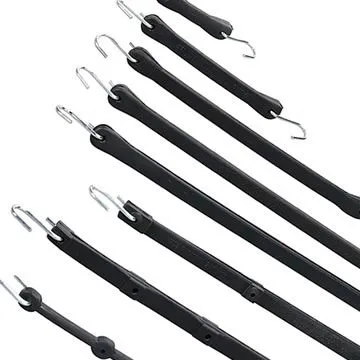- Afrikaans
- Albanian
- Amharic
- Arabic
- Armenian
- Azerbaijani
- Basque
- Belarusian
- Bengali
- Bosnian
- Bulgarian
- Catalan
- Cebuano
- Corsican
- Croatian
- Czech
- Danish
- Dutch
- English
- Esperanto
- Estonian
- French
- German
- Greek
- Hindi
- Indonesian
- irish
- Italian
- Japanese
- Korean
- Lao
- Malay
- Myanmar
- Norwegian
- Norwegian
- Polish
- Portuguese
- Romanian
- Russian
- Serbian
- Spanish
- Swedish
- Thai
- Turkish
- Ukrainian
- Uzbek
- Vietnamese
Nov . 10, 2024 13:07 Back to list
Installation Guide for Ceiling Access Panel in Your Home or Office Spaces
Installing a Ceiling Access Panel A Step-by-Step Guide
An access panel is a crucial component for any structure, offering easy entry to hidden spaces such as ceilings and walls. Whether it’s for plumbing, electrical wiring, or HVAC, having an access point allows for convenient maintenance and repair work. Installing a ceiling access panel might seem daunting, but with the right tools and guidance, it can be a straightforward DIY project. This article provides a detailed, step-by-step guide to help you successfully install a ceiling access panel.
Step 1 Choosing the Right Access Panel
Before diving into the installation process, it is essential to select the appropriate access panel. Access panels come in various sizes, materials, and styles. Opt for a model that fits your specific needs and matches your ceiling type. Common options include flush panels, which sit level with the ceiling, and recessed panels, designed to blend seamlessly with the surrounding area. Consider factors such as the frequency of use, the size of the space you'll need to access, and the overall aesthetic of your environment.
Step 2 Gather Your Tools and Materials
You’ll need several tools and materials to successfully install your ceiling access panel
- The access panel - A measuring tape - A utility knife or drywall saw - A level - A pencil - Screws and a screwdriver - A stud finder (optional) - Safety goggles and a dust mask (for protection)
Step 3 Prepare the Installation Area
Begin by identifying where you want to install the access panel. It’s important to select a location that provides efficient access to infrastructure while maintaining a discreet appearance. Use a stud finder to locate beams or joists in the ceiling. Avoid placing the panel directly above electrical wiring, plumbing, or ductwork unless it is necessary. Once you’ve selected the best location, use a measuring tape to mark the dimensions of the access panel on the ceiling.
Step 4 Cut the Opening
install ceiling access panel

With your marks clearly visible, it’s time to cut the opening for the access panel. Using a utility knife or drywall saw, carefully cut along the lines you’ve marked. Ensure that the cut is clean and precise to make the installation process smoother. After cutting, remove the piece of drywall and inspect the opening to ensure it’s free from any obstructions like wiring or pipes.
Step 5 Install the Access Panel
Now that you have the opening prepared, it’s time to install the access panel. Position the panel into the opening, ensuring that it is level and flush with the surrounding ceiling. If your panel requires screws or additional support, make sure to secure it according to the manufacturer’s instructions. In many cases, the panel will simply fit snugly within the opening, but some may require brackets or clips for secure fastening.
Step 6 Finishing Touches
Once the access panel is installed, take a step back to examine your work. Check to see that it is aligned properly and sits flush with the ceiling. If the panel has a removable cover, test that it opens and closes easily. If needed, you can paint the panel to match the surrounding ceiling for a more seamless appearance.
Step 7 Clean Up
After completing the installation, clean up any debris or dust generated during the project. Dispose of cut drywall pieces and other waste materials properly. It’s also a good idea to review the area to ensure that no tools are left behind.
Conclusion
Installing a ceiling access panel can be a rewarding and practical handyperson project, offering you easy access to vital components hidden above your ceiling. With careful planning and execution, you can improve the functionality of your space while maintaining its aesthetic appeal. Remember to follow these steps and prioritize safety throughout the process. With your newly installed access panel, you’ll be well-equipped to address any maintenance issues that may arise in the future. Happy DIY-ing!
-
Transform Interiors with PVC Gypsum Ceiling: A Stylish, Durable, and Moisture-Resistant SolutionNewsMay.19,2025
-
The Smart Interior Upgrade: Discover the Durability and Versatility of Gypsum Ceiling Access Panel SolutionsNewsMay.19,2025
-
The Smart Choice for Interior Design: Discover the Value of PVC Gypsum Ceiling SolutionsNewsMay.19,2025
-
Mineral Fiber Ceiling Tiles: The Smart Blend of Performance and AestheticsNewsMay.19,2025
-
Mineral Fiber Ceiling Tiles: The Superior Choice Over Gypsum for Sound and Fire SafetyNewsMay.19,2025
-
Mineral Fiber Ceiling Tiles: Eco-Friendly Strength and Style for Every CeilingNewsMay.19,2025







